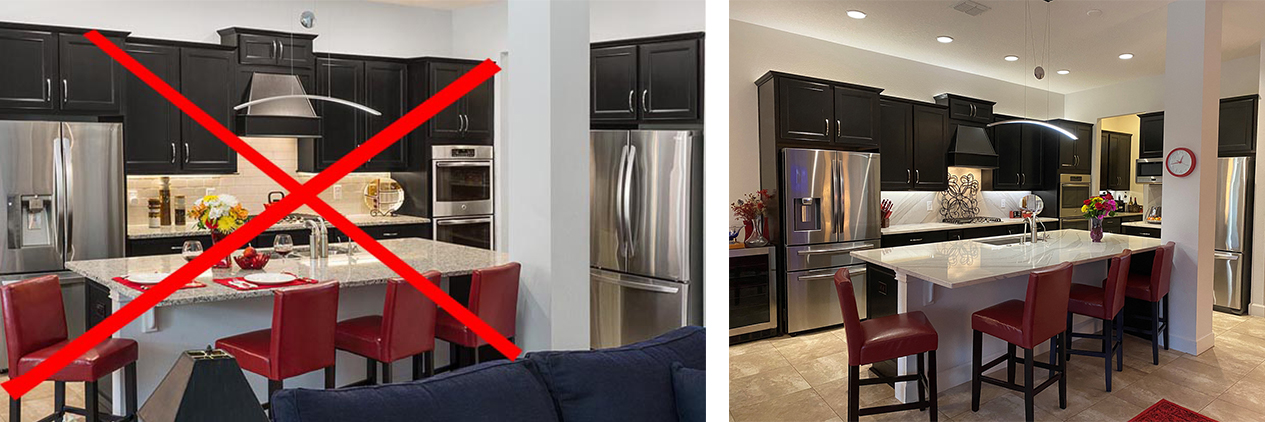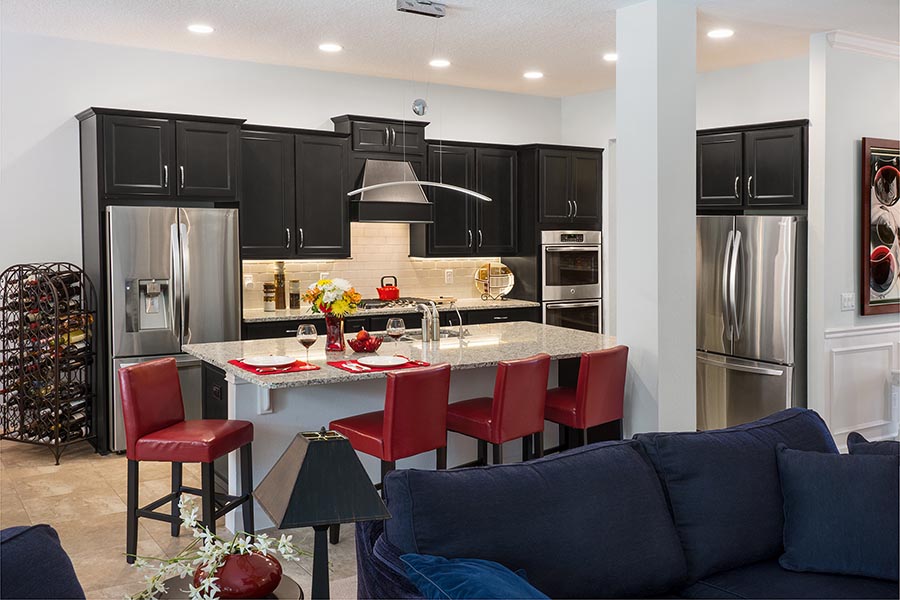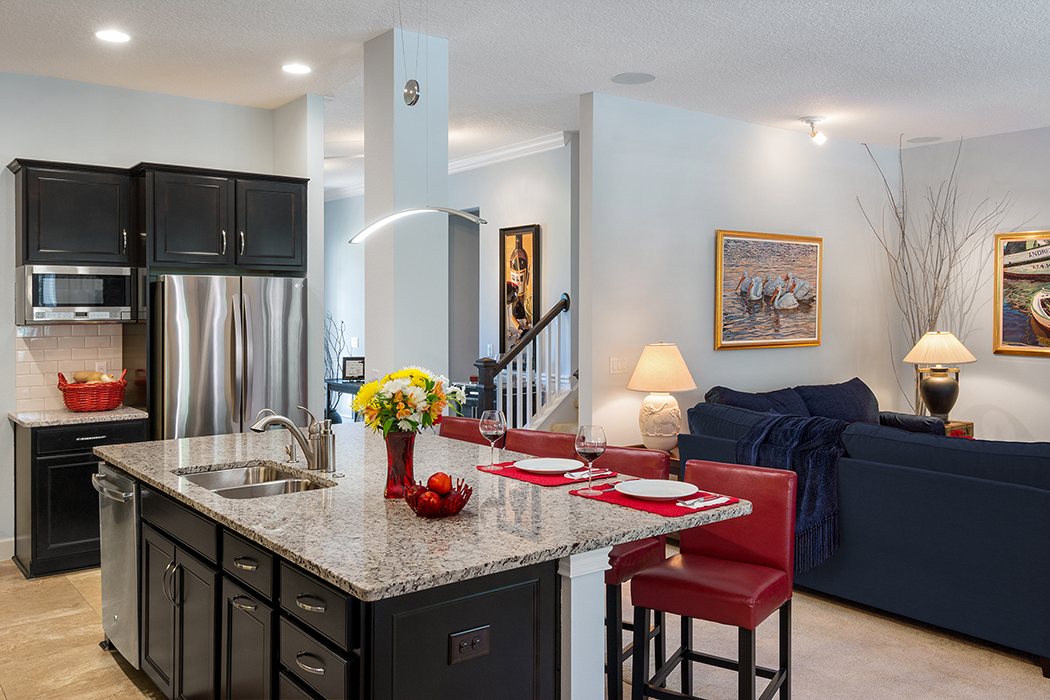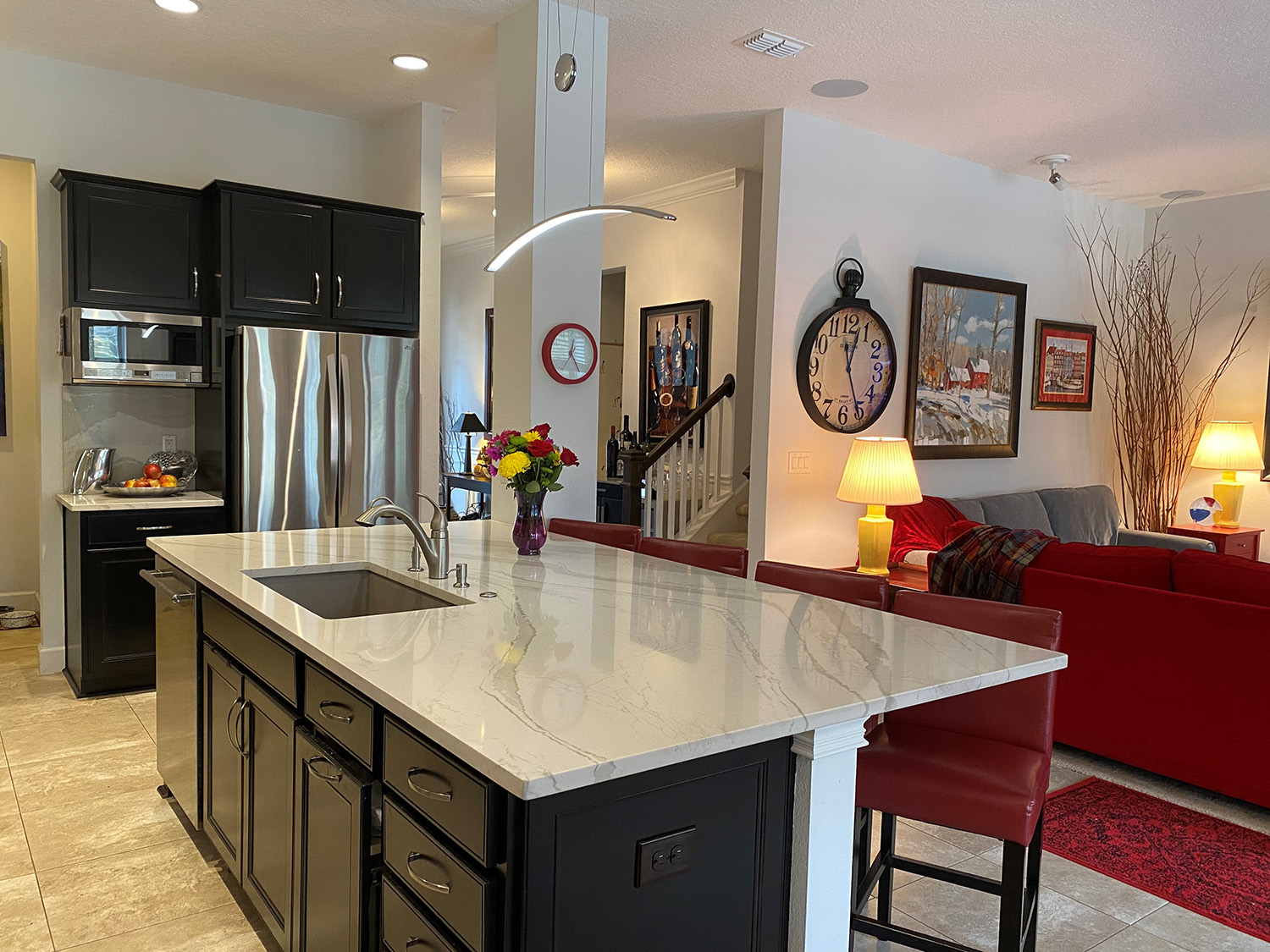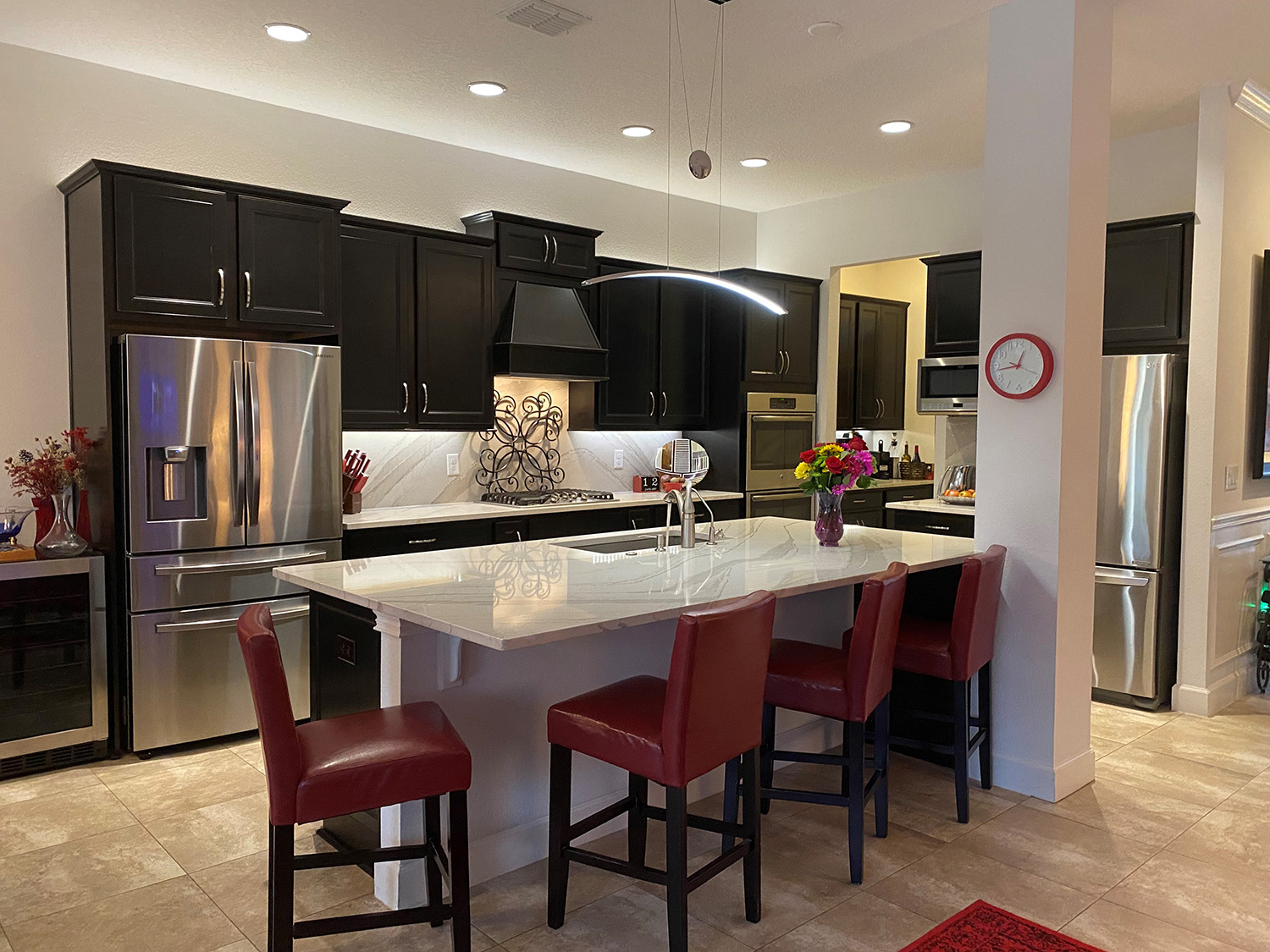“You need granite countertops to sell a home.” That was the declaration of our realtor. That was in 2016 when we decided to downsize and sell our home after 25 years.
“Really? But these are Corian countertops, and we have an integral sink.” Ours was a platinum gray granite look – not as exciting as the choices today but it still looked great. What was definitely dated was the design of the kitchen with the sink on a 45-degree angled peninsula with a 42” high breakfast bar. What can I say? It was a house of its time. Long story short, we did not replace the countertops and we were still able to sell our house in a timely fashion.
Now, the new house – it had granite countertops included – sweet! We selected a warm granite with a uniform grain in the kitchen and black granite in the master bath. And we were now in the granite club with all the cool kids. When we closed on our new house, the builder gave us a list of all the things we needed to do to maintain our granite counters. “Use this cleaner, make sure to seal it with this spray once a month and don’t let red wine sit too long on the counter as it will stain.”
Wait – what? I must routinely “seal” my countertops? Does anyone actually keep up with that? And red wine – we never drink that – much. Well, we certainly don’t waste red wine by spilling it – but I digress.
What we discovered is that granite was high maintenance – not exactly what 55+ empty nesters are looking for in this stage of our lives. Despite my best efforts, the counters were always a disaster. The granite along the edge of the cooktop was getting darker. That was from the over spray when I would spray my pans with oil. Excess spices used in cooking would disappear in the pattern of the granite only to be discovered later when I ran my hand over countertop and discovered the mess from feel. Gross. Wasn’t that where we spiced their chicken prior to cooking it? And isn’t raw chicken a source for salmonella?
Four year after moving in, we ripped out our countertops and replaced them with the new material en vogue: quartz – Cambria to be specific. Wow – what an improvement. Now I can see when my countertops are dirty, and our selection really brightened up our kitchen. While we were at it, we replaced that nasty stainless-steel sink that was constantly covered with water spots.
The problem with granite is it is too porous. Turns out that porosity is big deal in our Covid-sensitive society. Porous surfaces hold germs even after cleaning them (this is also the issue with marble). I’m told my new countertops have the same porosity as stainless steel – but without the water spots.
I am definitely not alone in my distaste for granite. One of my 55+ builders stopped using it years ago, but for a different reason. His buyers loved the movement of granite – until it was installed and then they decided that was too much movement. Or they didn’t realize the variation and unpredictability that comes from using a natural material. Cambria comes in a variety of colors and patterns from solid to wavy and everything in between – best of all, you know exactly what it will look like!
In case I haven’t driven the point home, let’s look at the before and after one last time (keeping in mind the “before” was taken with professional photography – hey, I did my best to mimic the shots!):
I don’t think I’m overstating it when I say that the difference is immense. We still have the black granite in the owner’s bath. The water from the faucet is starting to create a light gray haze. I’m sure in a couple more years we will replace those too. And good riddance!
Thanks for including me in your day!
Categorized in: KitchenDesign
This post was written by Housing Design Matters


